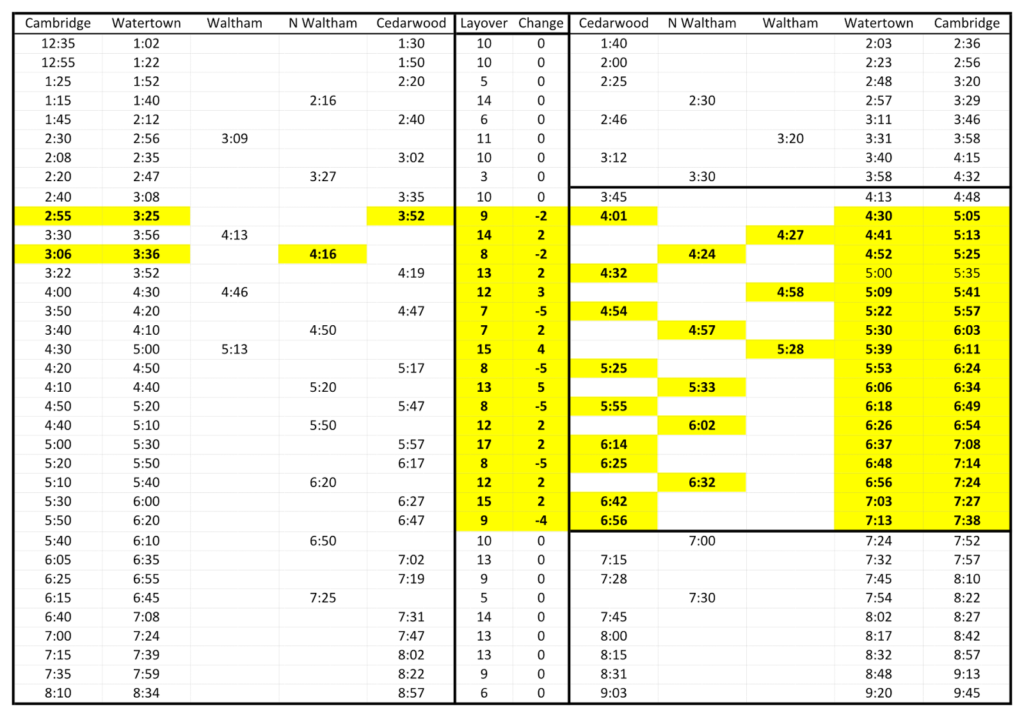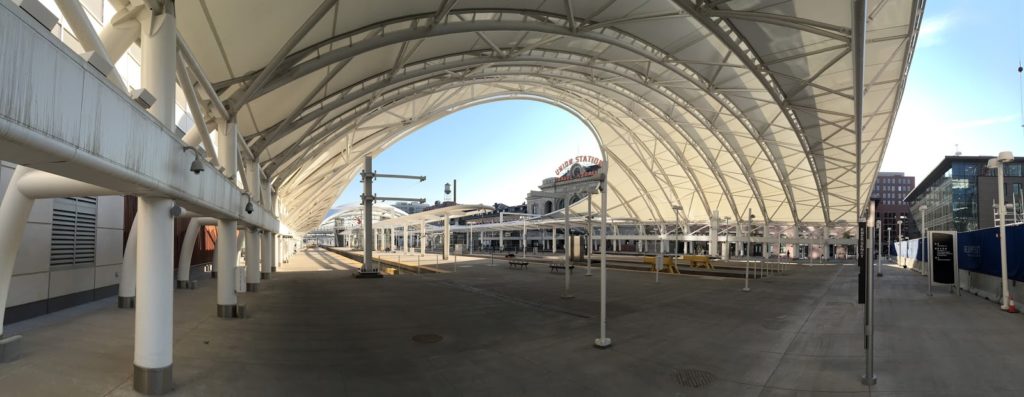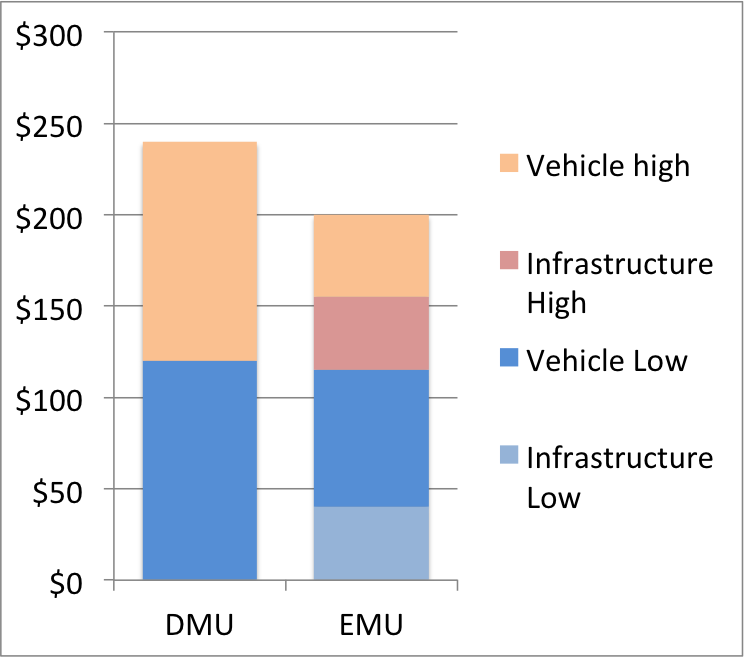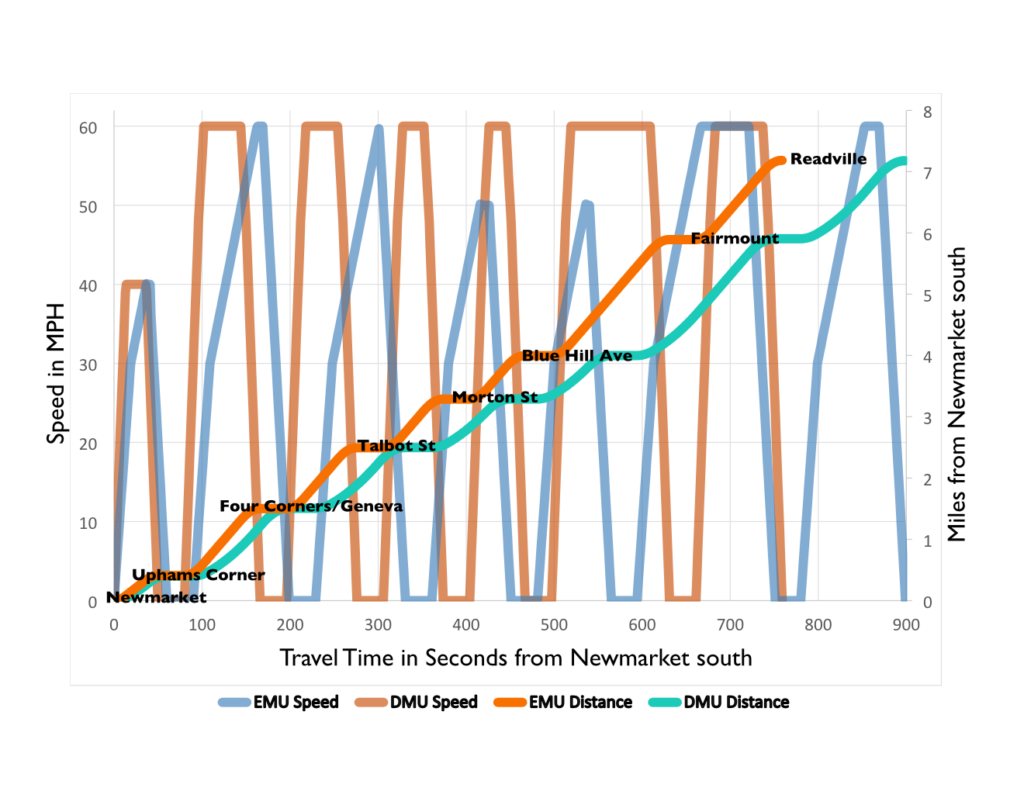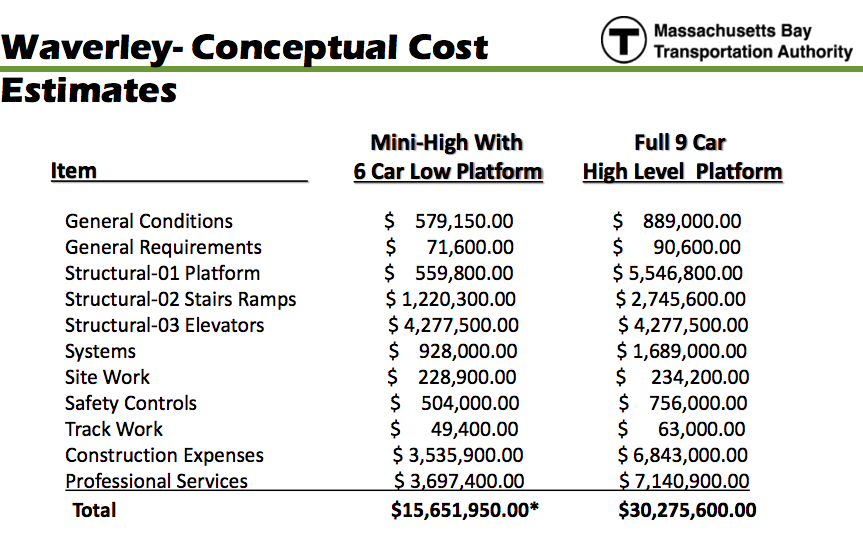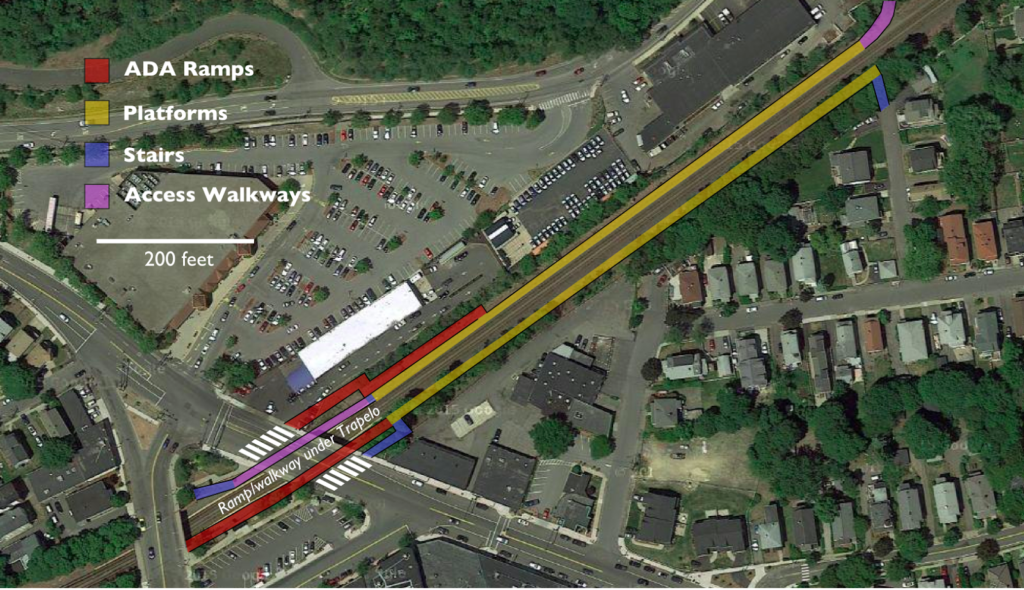I posted about a year ago about the 70 bus, with its bizarre schedule and uneven headways between Waltham and Boston. I have a friend who has taken the 70 daily for a decade, outbound in the morning and inbound in the evening. And she’s not alone. After another discussion about the uneven headways, poor schedule adherence and endemic bunching, I decided to ask her (and some of her friends) to keep track of scheduling and crowding. That spreadsheet is growing. If you take the 70, I’m happy to have you help out.
 I’m particularly interested in crowding, because it seems the MBTA, in the afternoon, has taken the initiative to have even outbound headways (a laudable goal; morning inbound could use some help, too), but pay no attention to inbound traffic. They may assume that because it runs from Cambridge towards Waltham, everyone takes it in that direction. And plenty do. But plenty also use it for the “reverse” commute; my friend regularly shares the bus with 50 or 60 of her closest friends. The corridor is growing; she reports the bus is getting busier. It needs to be scheduled to provide service to this area, lest potential customers vote with their feet and drive instead.
I’m particularly interested in crowding, because it seems the MBTA, in the afternoon, has taken the initiative to have even outbound headways (a laudable goal; morning inbound could use some help, too), but pay no attention to inbound traffic. They may assume that because it runs from Cambridge towards Waltham, everyone takes it in that direction. And plenty do. But plenty also use it for the “reverse” commute; my friend regularly shares the bus with 50 or 60 of her closest friends. The corridor is growing; she reports the bus is getting busier. It needs to be scheduled to provide service to this area, lest potential customers vote with their feet and drive instead.
If you look at the afternoon inbound schedule (part of it is shown to the right), it is scheduled to have bus bunching. There are 16 buses departing Watertown Square between 4 pm and 7 pm, on average, one every 11 minutes. However, twelve of these buses are scheduled to come in pairs, three minutes apart or less. So in reality there is only service 10 times during those three hours, or once every 18 minutes. That’s a big difference. To put it in a math-ier way, the current schedule has an 11 minute headway with a standard deviation of 9:25. That’s not good. (The goal, with even headways, should be zero.)
With some complex routing schemes, buses come in to a route from one line and leave the other end on to another. But the 70 extends out to the edge of the system, and a bus at the end of a line had little choice other than to turn around and run back to Cambridge. It’s particularly complex with three separate termini—Cedarwood, the North Waltham figure-8 (the 70A) and several short turns in Waltham Square—but it’s pretty easy to reverse-engineer the schedule and figure out which outbound bus runs inbound, and how much schedule recovery each bus has. By doing this, we can see whether it might be possible to make some small changes to the schedule in order to have buses scheduled at more regular intervals and provide better service overall. Right now, with the T out of space for new buses, we can’t really add service. But we can certainly make the service we have run better.
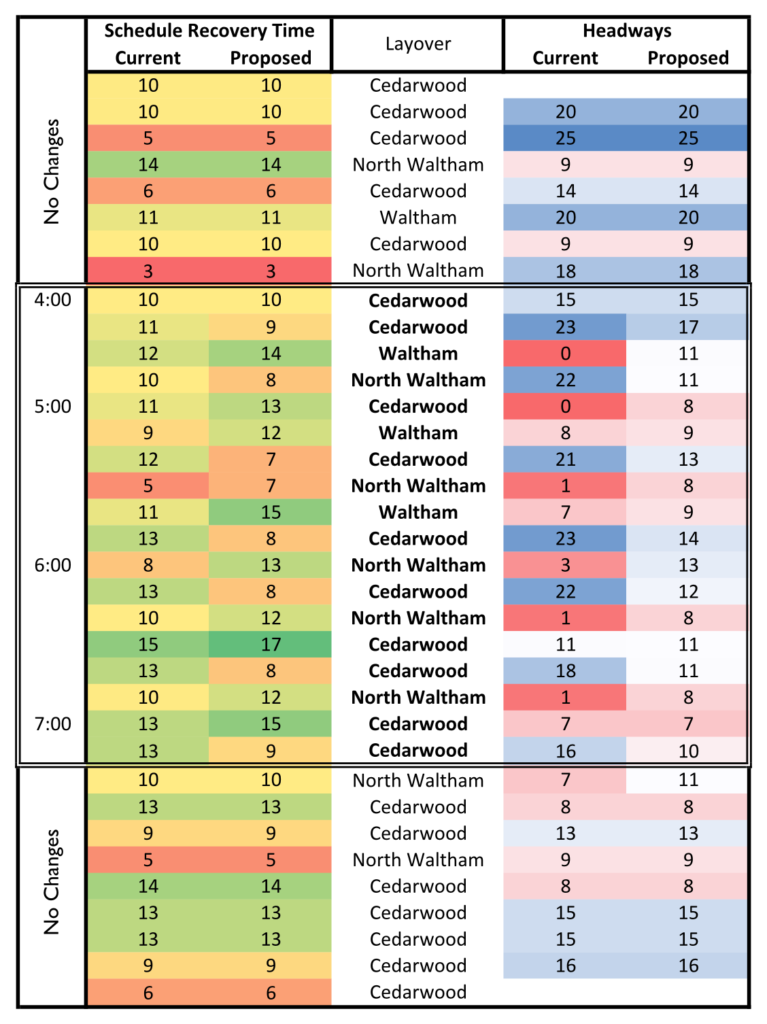 |
| Scheduled times in Watertown Square. |
So here’s my proposal: by slightly changing two early departures out of Cambridge (in the 3:00 range) and changing layover times by no more than five minutes (and leaving at least 7 minutes for schedule recovery at the Waltham end of the route) we can go from 11 minutes with a standard deviation of 9:25 to the same 11 minute average headway, but with a standard deviation of 2:45. The longest current headway is 23 minutes, with five headways over 20 minutes, and the current shortest headway is 0 minutes (two buses scheduled at the same time). The proposed schedule has all headways between 7 and 17 minutes. They’re not perfectly even, but they’re a whole lot better.
Take a look at the conditional formatting to the right. Muted, middle colors are less variable. Right now, the schedule seems optimized for even layover times at the expense of even headways. So a bus is somewhat more likely to leave on time, but then scheduled to be part of a bunch. The proposed schedule varies the layover times somewhat more (stdev of 2:19 vs 3:02), but it is far less variable for headways. Note how all the dark blue and bright red colors disappear from the chart on the right, and while there is some variability, there is far less than the current schedule. This means that buses aren’t scheduled to run in groups of two, and there are no longer scheduled 20-25 minute service gaps (which, with traffic fluctuations, can easily turn in to waits of half an hour or more, on a route which, nominally, has a bus every 10 to 12 minutes).
The T needs to analyze the patronage of the route, and make sure that they aren’t robbing Peter to pay Paul. Service reliability for normal peak ridership is very important, but it should not come at such a great expense to reverse peak riders. They constitute a large percentage of the passengers on the route—likely higher than many other comparable MBTA routes—and the T should balance the needs of all passengers, not just create a schedule which works for one direction at the expense of the other.
This afternoon, I watched the 70 on Nextbus as buses bunched—some as scheduled and some on their own. The schedule for the 70A in particular does not seem to have enough time for all buses on the route, and the figure-8 service pattern in North Waltham is pretty special. The 70 is a very complex route and in the long run the right answer is probably to cleave off the 70A and operate the route as a single route to alleviate bizarre headways and bunching. But in the short term, a few minor changes could be made for the next schedule rating, which would alleviate some of the problems experienced by riders today.
For the reference of current passengers, here’s an afternoon schedule which shows the originating point of various buses. Note that Waltham buses are likely more timely than Cedarwood buses, and both are more reliable than the 70A from North Waltham. Note that both this schedule and the one below are sorted by Watertown inbound, so the outbound trips are not in order. (If you’re going outbound, it’s basically a bus every 10 minutes at rush hour, inbound, it’s a bit more difficult to comprehend)


